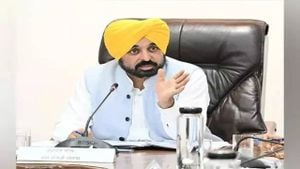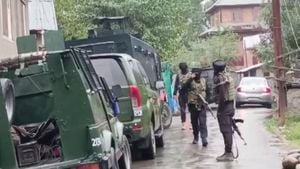Belarus is gearing up for its January election, and the preparations are signaling trouble for the electorate. The Belarusian police have begun extensive anti-riot drills, which highlight the government’s determination to stifle any potential protests during this contentious political period. President Alexander Lukashenko, who has been labeled as authoritarian by many, is aiming for his seventh consecutive term and is not expected to face significant opposition as opposition leaders are either imprisoned or living in exile.
On November 19, 2024, police launched these drills amid concerns about public unrest following allegations of electoral fraud. The Interior Minister Ivan Kubrakov stated these efforts were necessary to combat extremism and announced their intent to maintain public order. By demonstrating their readiness with full riot gear and mobilizing officers for swift action, the authorities are sending a clear message: dissent will not be tolerated.
These measures come after massive street protests erupted after the last presidential election, widely regarded as illegitimate by observers, including the United States and the European Union. The protests led to thousands of arrests, brutal crackdowns, and significant international backlash against Lukashenko's government. Many activists and political dissidents have been jailed or are currently facing harsh reprisals for organizing or participating in protests.
One of the prominent opposition figures, Sviatlana Tsikhanouskaya, who has been living abroad since she fled following the violent suppression of the protests, has openly criticized the drills, describing them as preparations for systemic repression. “Drills in suppression of citizens aren’t signs of strength. They are signs of fear,” Tsikhanouskaya asserted, explaining how these drills reflect the government’s anxiety over its legitimacy.
The situation highlights the extensive lengths to which the Belarusian government is willing to go to maintain its grip on power. Despite recent gestures, such as the pardon of 146 political prisoners, many view these acts as mere attempts to placate international critics rather than genuine reforms. The pardons may serve to counterbalance the violence of past crackdowns and present Lukashenko’s regime as moderate, yet the fear tactics employed during these upcoming drills demonstrate otherwise.
Authorities have stated their motives clearly: they want to prevent any “manifestation of extremism and terrorism” and thwart attempts to involve citizens in illegal activities. Still, skeptics see the drills as calculated public relations maneuvers, illustrative of the increasingly authoritarian nature of Belarus's political climate.
Human rights organizations have not missed the opportunity to weigh in on these developments. They posit this militarized response to protests as part of Lukashenko's broader strategy to deter dissent. The crackdowns on basic freedoms have drawn widespread condemnation, raising questions about the legitimacy of the upcoming election.
These anti-riot drills are not just concerned with physical preparations; they also include psychological warfare against the civilian population. By showcasing their police capabilities, the government seeks to instill fear and discourage the public from vocalizing dissent. The police, decked out with shields and helmets, rehearsing for potential conflict, send ominous signals to those observing from the sidelines.
The geopolitical stakes surrounding the Belarusian election are apparent. Western powers have placed significant sanctions on Lukashenko's government following the events of the 2020 election. Still, with tensions high between various nations, there are fears these sanctions may not be enough to sway the geopolitical dynamics. The situation remains fluid, and as January approaches, all eyes will be on Belarus.
International observers and human rights advocates continue to hold their breath as the political climate thickens. There is collective hope for stability and change, but at this moment, what looms is oppression wrapped tightly around the ideation of democracy. Will the people of Belarus unite their voices against the silence forced upon them, or will they be cowed by the show of force? Only time will tell as the elections near.
These developments shed light on the challenges of governing under such a repressive regime and highlight the intersection of fear tactics and governance. With every move made by the police, the exceptional training and marching drills symbolize the government’s refusal to yield ground to the citizens’ quest for freedom.
Indeed, the crackdowns have only intensified over the past few months leading up to the elections, offering little hope of democratic progression. Lukashenko’s government appears unyielding as it gears up to defend itself against possible protests, preparing to leave many individuals voiceless, reiteratively reminding citizens of the potential consequences of dissent.
Through these actions, the Belarusian government sends the alarming message to the international community: the regime will continue with its authoritarian policies unabated, even as it tries to showcase itself as open to dialogue and improvement. For many, the upcoming elections feel less like choices and more like echoes of oppression.
The preparations for these drills and the narratives around them reflect not just the internal fears of the Belarusian regime, but align closely with larger global narratives—where the struggle for democracy often awakens forces of violent repression. The countdown to the elections is not merely about who will be voted for, but whether the fabric of civil society can withstand the pressures of authoritarianism. The world watches, witnessing how this election will unravel, knowing it is more than the immediate outcome, but the future of Belarusian democracy hanging delicately on the balance.



